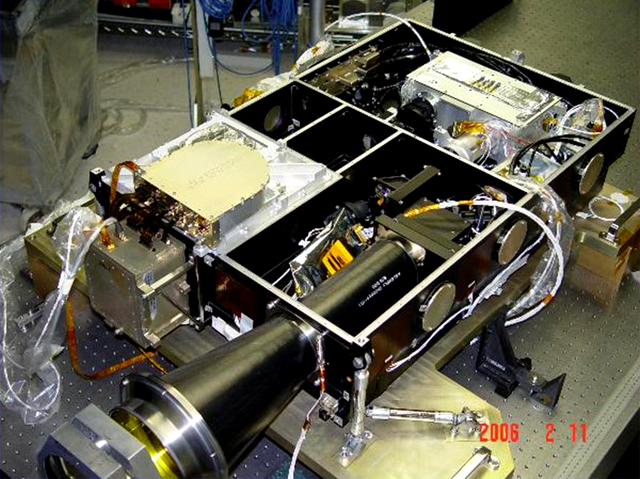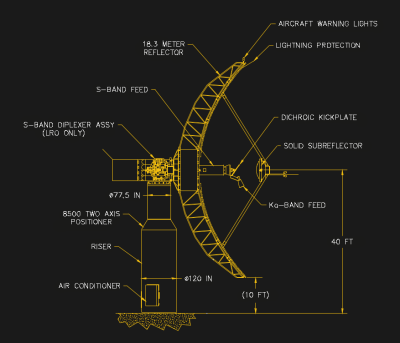Since the dawn of the Space Age, the inner planets and the Earth-Moon system have gotten the lion’s share of attention. That makes sense; it’s a lot easier to get to the Moon, or even Mars, than it is to Saturn or Neptune. So our probes have mostly ventured into the relatively comfortable confines of the asteroid belt, visiting every world within, occasionally landing on its surface and poking a few holes or even leaving a few footprints.
But there is still one place in this warm and familiar neighborhood that remains mysterious and relatively unexplored: the sun. This seems odd, since our star is the source of all energy for our world and the system at large, and its constant emissions across the electromagnetic spectrum and occasional physical eruptions are literally a matter of life and death for us. When the sun sneezes, we can get sick, and it has the potential to be much worse than just a cold.
While we’ve had a series of satellites dedicated to observing the Sun over the past few decades, it’s not the easiest celestial body to observe. Most spacecraft do their best to avoid the Sun’s abuse, and building something that can withstand the beatings our star can dish out is a daunting task. But there’s one satellite that’s been turning everything the Sun throws at it into a near-constant stream of high-quality data for nearly 15 years. The Solar Dynamics Observatory, or SDO, has also delivered some stunning images of the Sun, like this CGI-style sequence of a failed solar flare. Images like these have captured the imagination during this surprisingly active solar cycle and highlighted the importance of SDO in our solar early warning system.
Living with a star
In many ways, SDO has its roots in the earlier Solar and Heliospheric Observer, or SOHO, ESA’s hugely successful solar mission. Launched in 1995, SOHO is in a halo orbit at the Lagrange point L1 and provides near real-time images and data about the Sun using a suite of twelve scientific instruments. Originally planned for a two-year science program, SOHO remains active to this day, monitoring the Sun and acting as an early warning system for coronal mass ejections (CMEs) and other solar phenomena.
Although L1the point between the Earth and the Sun where the gravity of the two bodies is in balance, offers an unobstructed view of our star, it has disadvantages. The most important of these is the distance; at 1.5 million kilometers it is already enough to L1 is a much more expensive proposition than any geocentric orbit. The distance also makes radio communications much more complicated, requiring the specialized infrastructure of the Deep Space Network (DSN). SDO was designed in part to avoid some of these shortcomings, and to take advantage of what was learned on SOHO and extend some of the capabilities provided by that mission.
SDO grew out of Living with a Star (LWS), a science program launched in 2001 that was designed to explore the Earth-Sun system in great detail. LWS identified the need for a satellite that could observe the Sun continuously in multiple wavelengths and provide data on its atmosphere and magnetic field at an extremely high rate. These requirements dictated the specifications of the SDO mission in terms of orbital design, spacecraft engineering, and, oddly enough, a dedicated communications system.
Geosynchronous, with a twist
Getting a good look at the Sun from space isn’t necessarily as easy as it seems. For SDO, designing a suitable orbit was complicated by the stringent and somewhat conflicting requirements for continuous observations and constant high-bandwidth communications. Joining SOHO at L1 or setting up shop at one of the other Lagrange points was out of the question because of the distances, leaving a geocentric orbit as the only viable alternative. A low Earth orbit (LEO) would have left the satellite in the Earth’s shadow for half of each revolution, making continuous observations of the Sun difficult.
To avoid these problems, SDO’s orbit was bumped up to geostationary transfer orbit (GEO) (35,789 km) and tilted to 28.5 degrees relative to the equator. This orbit would give SDO continuous exposure to the sun, with only a few short periods during the year when the Earth or Moon would obscure the sun. It would also provide a constant line of sight to the ground, greatly simplifying the communications problem.
Science of the sun
The main body of SDO has a pair of solar panels on one side and a pair of steerable high-gain dish antennas on the other. The LWS design requirements for the SDO science program were modest and focused on monitoring the Sun’s magnetic field and atmosphere as accurately as possible, so only three science instruments were included. All three instruments are mounted at the end of the spaceframe with the solar panels, to enjoy an unobstructed view of the Sun.
Of the three science packages, the Extreme UV Variability Experiment, or EVE, is the only instrument that does not image the entire disk of the Sun. Instead, EVE uses a pair of multiple EUV grating spectrographs, known as MEGS-A and MEGS-B, to measure the extreme UV spectrum from 5 nm to 105 nm with a resolution of 0.1 nm. MEGS-A uses a series of slits and filters to shine light onto a single diffraction grating, which spreads the Sun’s spectrum across a CCD detector to cover the band from 5 nm to 37 nm. The MEGS-A CCD also acts as a sensor for a simple pinhole camera known as a Solar Aspect Monitor (SAM), which directly measures individual X-ray photons in the range of 0.1 nm to 7 nm. MEGS-B, on the other hand, uses a pair of diffraction gratings and a CCD to measure EUV from 35 nm to 105 nm. Both instruments capture a full EUV spectrum every 10 seconds.
To study the Sun’s corona and chromosphere, the Atmospheric Imaging Assembly (AIA) uses four telescopes to capture full disk images of the Sun in ten different wavelengths from EUV to 450 nm. The 4,096 by 4,096 sensor gives the AIA a resolution of 0.6 arcseconds per pixel, and its optics allow it to image down to nearly 1.3 solar radii, capturing fine detail in the Sun’s thin atmosphere. The AIA also visualizes the Sun’s magnetic fields as hot plasma collects along lines of force, highlighting them. Like all instruments on SDO, the AIA is built with throughput in mind; it can collect a full data set every 10 seconds.
To peer deeper into the Sun’s interior, the Helioseismic and Magnetic Imager (HMI) measures the motion of the Sun’s photosphere and the strength and polarity of its magnetic field. The HMI uses a refracting telescope, an image stabilizer, a set of tunable filters including a pair of Michelson interferometers, and a pair of 4,096 by 4,096-pixel CCD image detectors. The HMI captures full-disk images of the Sun, known as Dopplergrams, which reveal the direction and speed of motion of structures in the photosphere. The HMI is also able to insert a polarizing filter into the optical path to produce magnetograms, which use the polarization of light as a proxy for the strength and polarity of the magnetic field.

Continuous data, and lots of it
Like all SDO instruments, HMI was built with data throughput in mind, but with a twist. Helioseismology requires continuous data collection over long observation periods; the original 5-year mission plan called for 22 separate HMI runs lasting 72 consecutive days, capturing 95% of the data. So HMI must not only take images of the Sun every four seconds, but must also reliably and completely bundle them for transmission to Earth.

While most space programs attempt to leverage existing communications infrastructure, such as the Deep Space Network (DSN), the unique requirements of SDO necessitated a dedicated communications system. The SDO communications system was designed to meet the throughput and reliability needs of the mission, literally from the ground up. A dedicated ground station consisting of a pair of 18-meter dish antennas was constructed in White Sands, New Mexico, a location specifically chosen to minimize the chance of rainstorms degrading the Ka-band downlink signal (26.5 to 50 GHz). The two antennas are approximately 5 km apart within the downlink beamwidth, presumably for the same reason; storms in the New Mexico desert are often erratic, making it more likely that at least one location will always have a solid signal, regardless of the weather.
To ensure that all downlinked data is captured and sent to the science teams, a complex and highly redundant Data Distribution System (DDS) has also been developed. Each dish has a redundant pair of receivers and servers with RAID5 storage arrays, feeding a miniature data center of twelve servers and associated storage. A Quality Compare Processing (QCP) system continuously monitors the downlinked data quality of each instrument onboard SDO, storing the best available data in a temporary archive before sending them in near real-time to the science team assigned to each instrument.
The numbers involved are impressive. The SDO ground stations operate 24/7 and are almost always unattended. SDO returns about 1.3 terabytes per day, so the ground station has received and forwarded almost 7 petabytes of images and data to science teams in the 14 years it has been in operation, with almost all of it available the moment it was generated.
As impressive as the numbers and the engineering behind them are, it’s the images that get all the attention, and understandably so. NASA makes all of its SDO data public, and nearly every image is stunning. There are also plenty of compilations of “greatest hits,” including a film reel of the X-class flares that resulted in the spectacular aurorae over North America in mid-May.
Like many NASA projects, SDO has far exceeded its planned lifespan. It was designed to capture the midpoint of Solar Cycle 24, but has managed to remain in service through that cycle’s solar minimum and into the next, and is now closely monitoring the peak of Solar Cycle 25.
